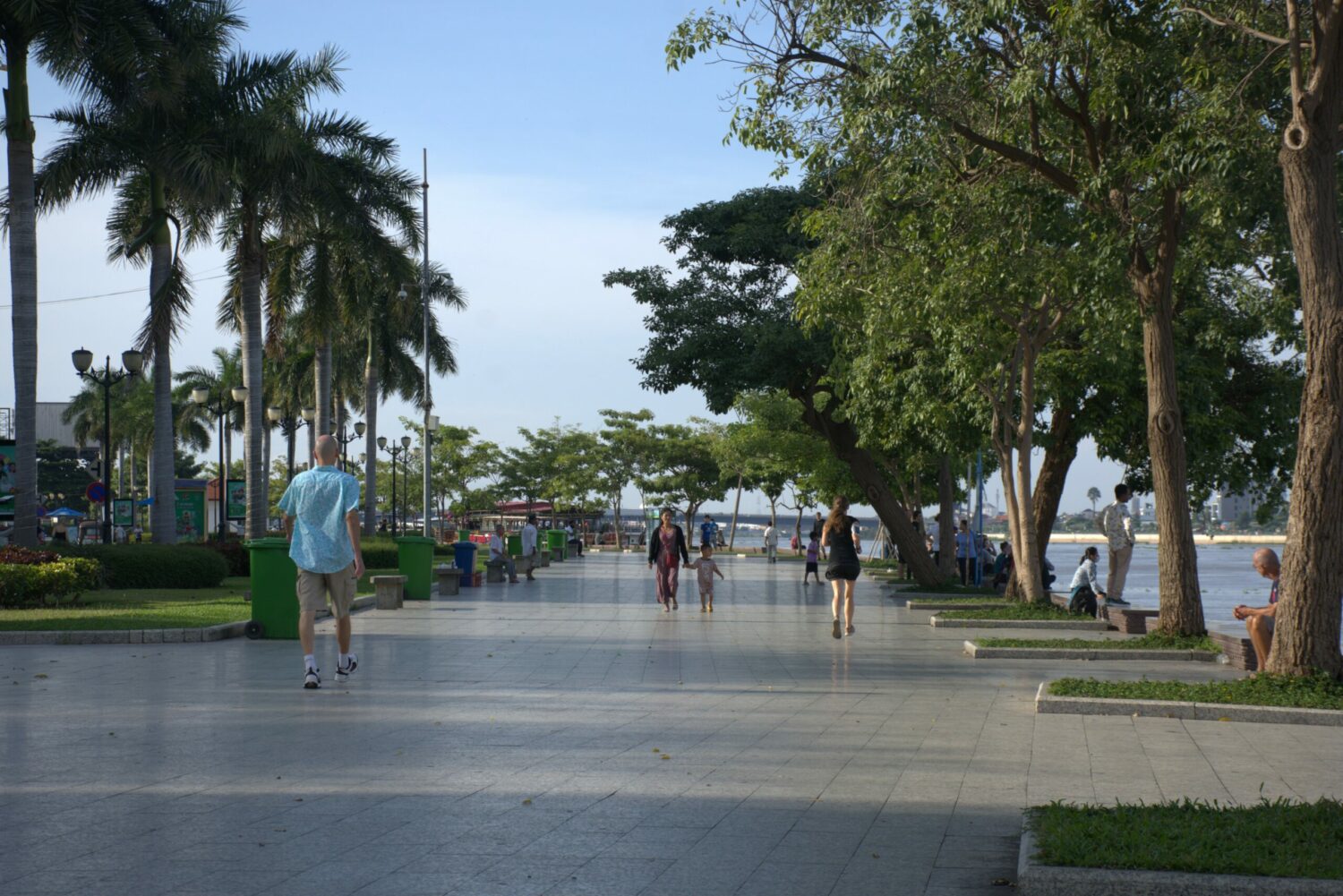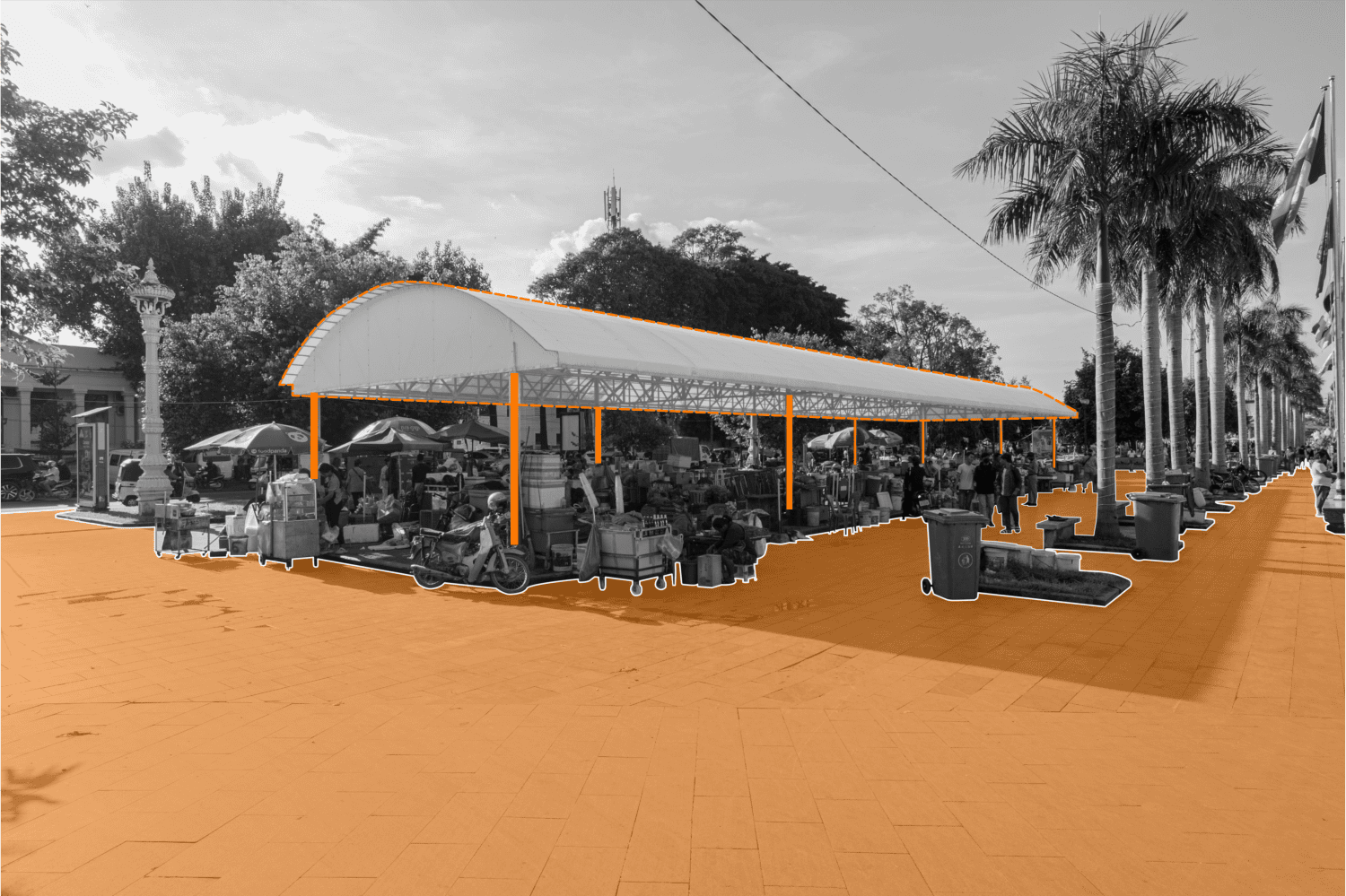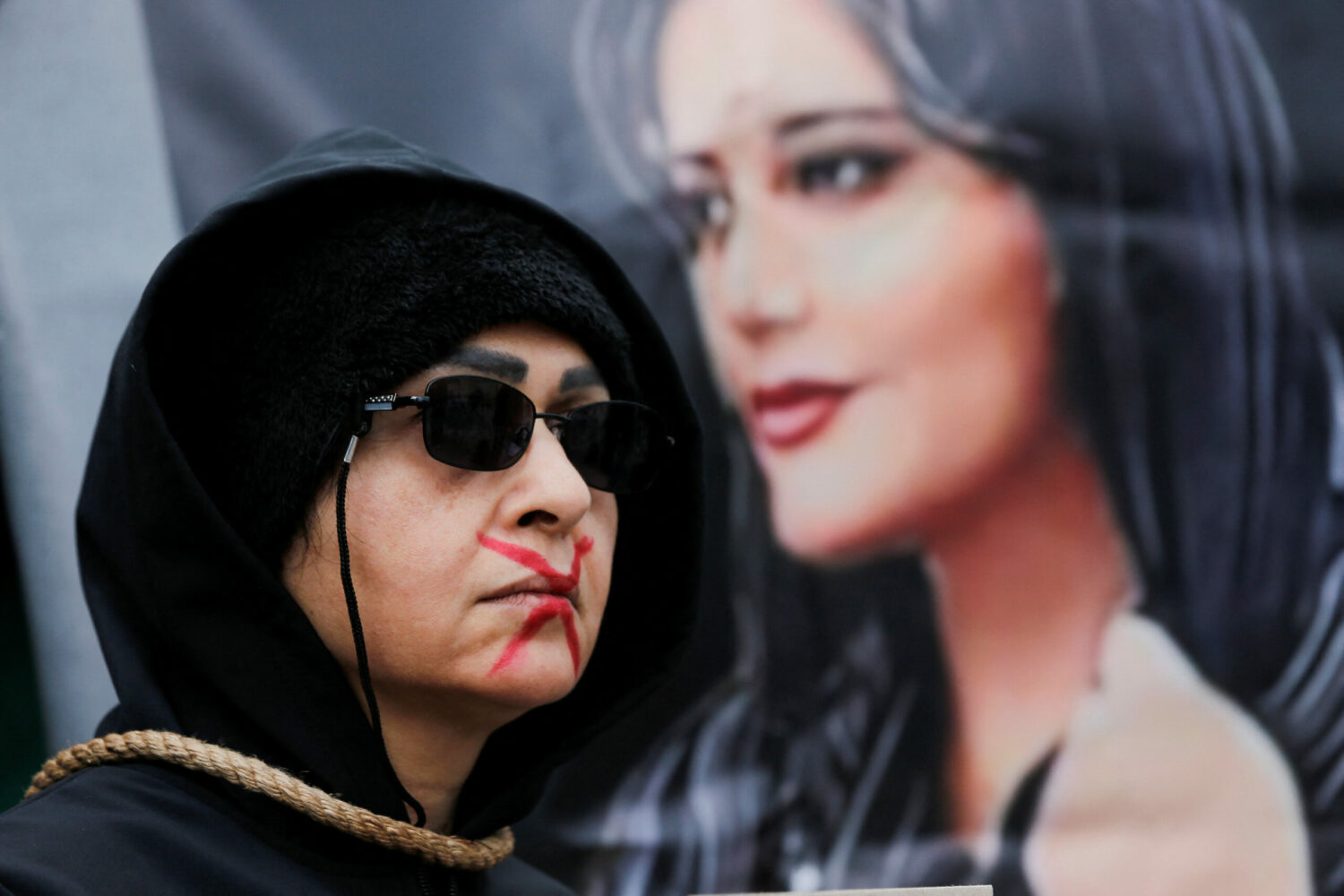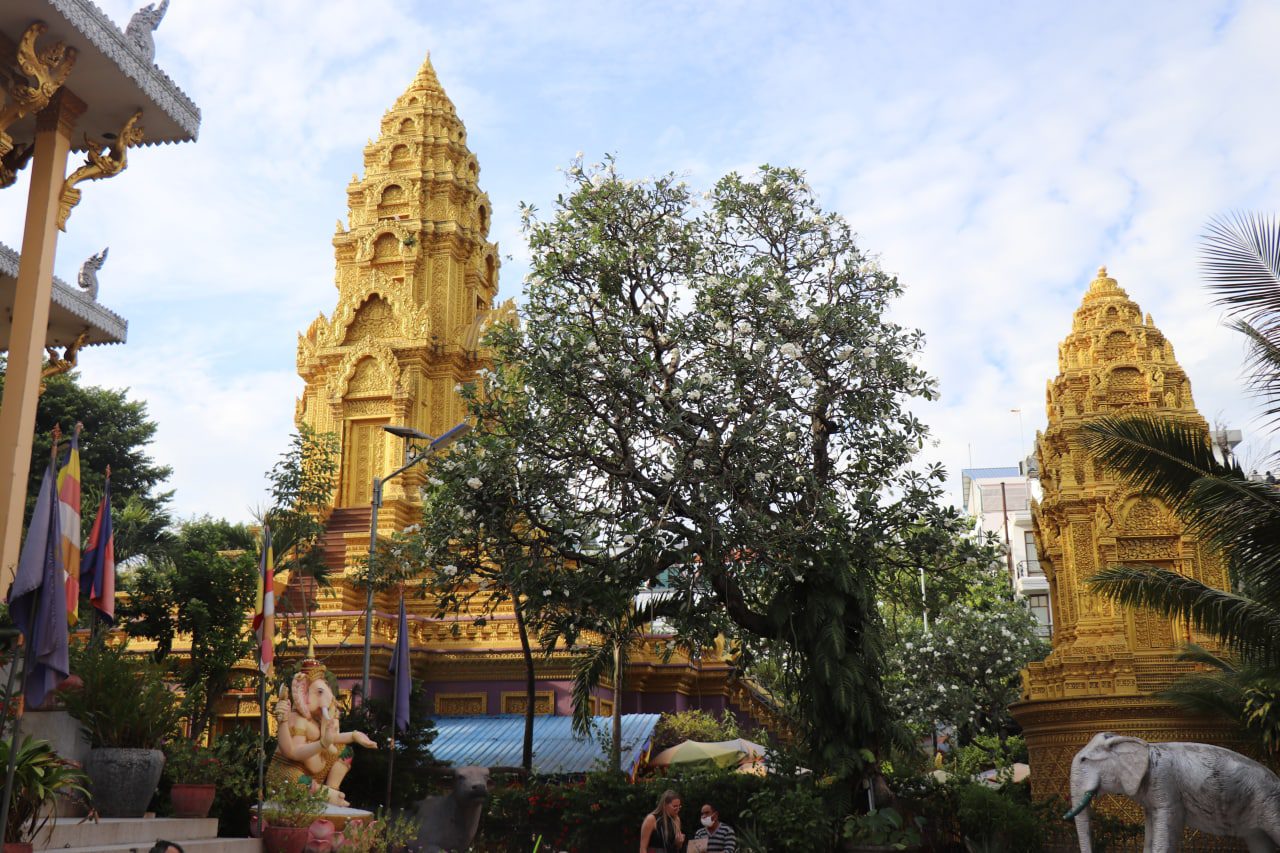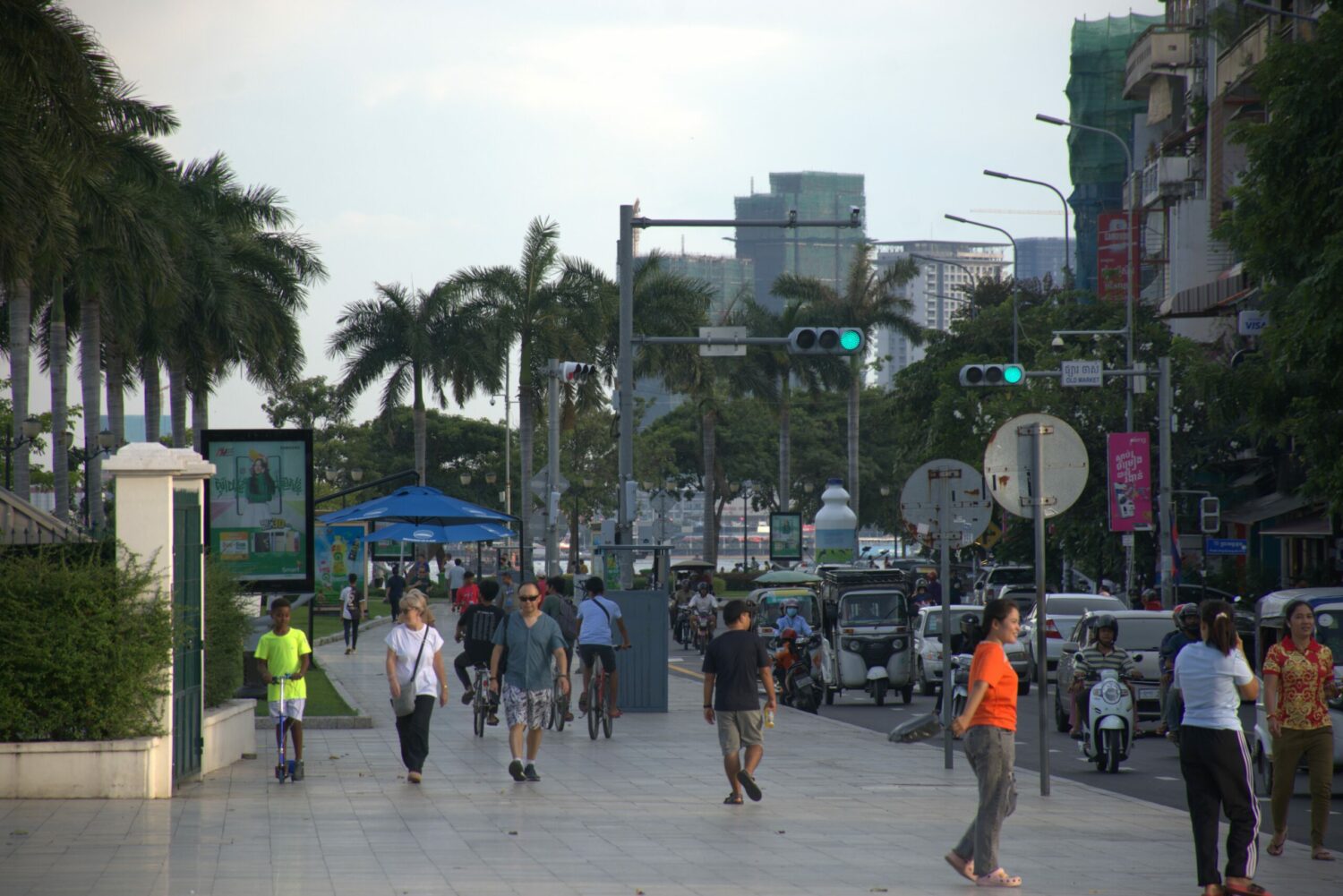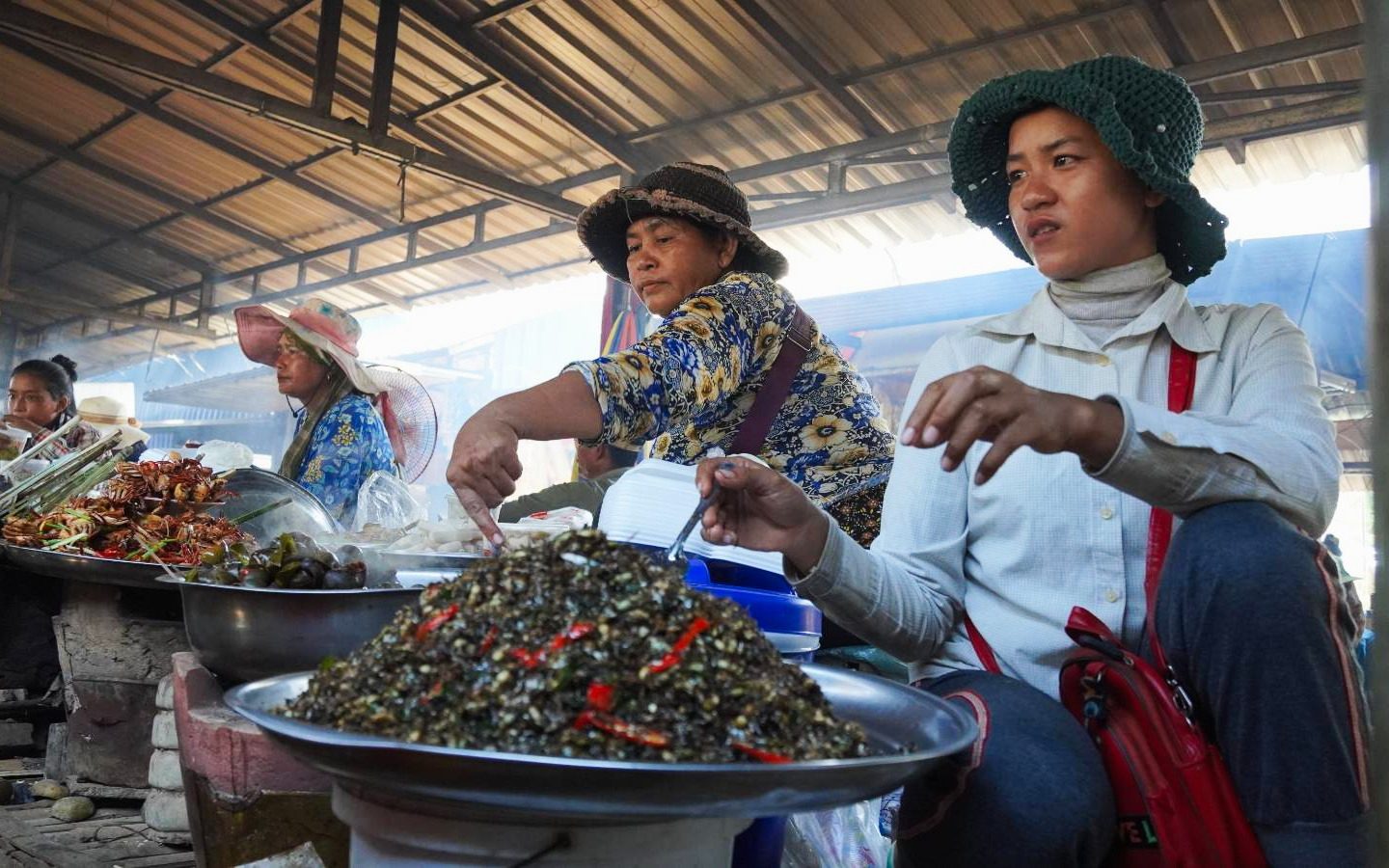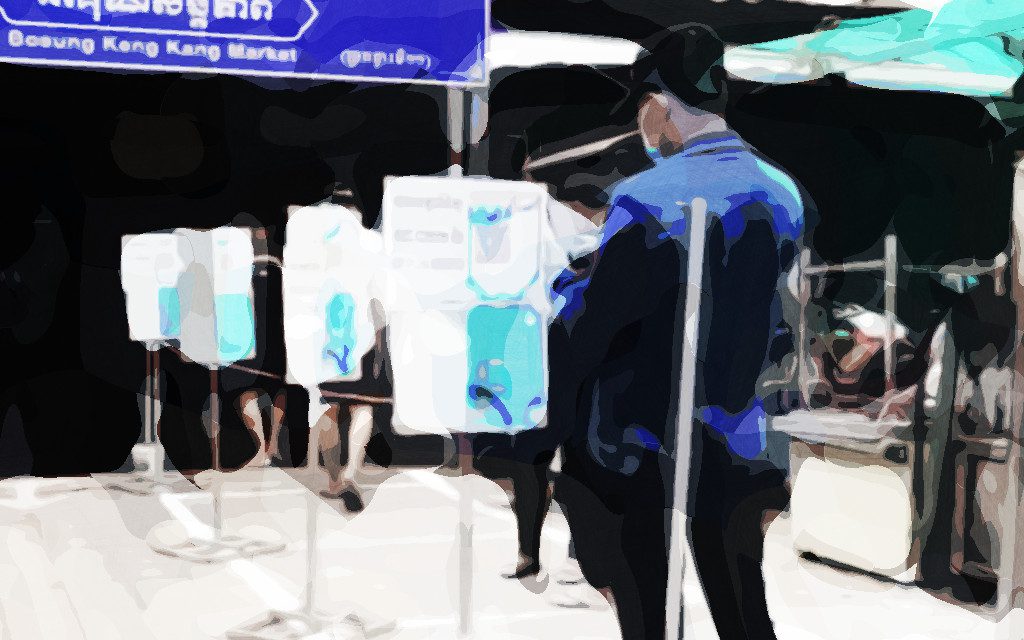After months of standing relatively empty during the height of the pandemic, Phnom Penh’s riverside is once again bustling with activity. If you visit in the evening you will see people jogging, biking and walking, and street food vendors selling to passersby. Each day around sundown, the space in front of the Royal Palace is packed with children running and playing on the grass, people coming to buy food, to picnic, and to feed pigeons.
While the city’s riverside and the Royal Palace lawn are spaces that are clearly beloved by locals and visitors alike, it’s hard to ignore the existing limitations of these spaces.
One of the most critical problems is, of course, the torrent of vehicle traffic that runs alongside these zones. Four lanes of cars, motos and trucks run alongside the park on the riverside. These high-speed vehicles increase the chances of traffic accidents and pose risks to pedestrians.
But the other major issue that prevents the full use of these spaces is their climate-unaware design. There is a reason that riverside and the Royal Palace lawn are only bustling at sunup and sundown. Phnom Penh’s often-blistering sun and heat render these places virtually unusable at all other times of the day.
We must redesign these spaces to make them more human-centric. One critical step to humanizing Preah Sisowath Quay, would be to pedestrianize this thoroughfare and turn into a destination for people to come to, rather than a place for traffic to come through. But any pedestrianization efforts to increase the share of public space along the riverside must go hand in hand with a more sustainable, climate-aware design. In short, these spaces must be designed in ways that work with the local climate, rather than against it.
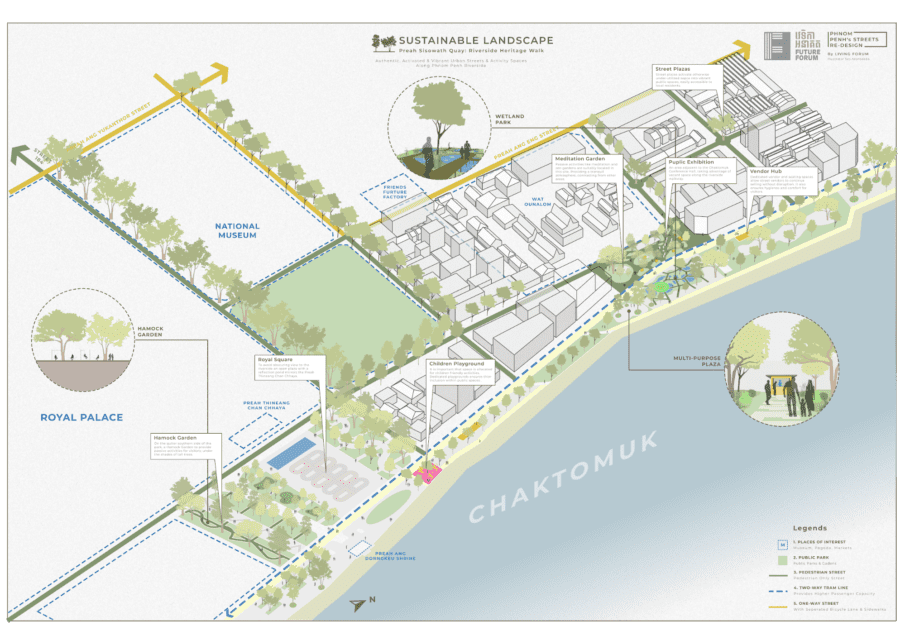
Creating Climate Compatible Infrastructure
Walking during the afternoon along today’s riverside is quite a scorching experience. In its current state, the riverside is made up of large swaths of mostly uncovered, bare pavement. There is little shade available for riverside-goers and for vendors.
While this issue may seem like an afterthought to policy-makers and planners in Phnom Penh, rising urban temperatures are being taken very seriously in cities around the world. Cities around the globe, for instance, have begun appointing “chief heat officers” whose roles revolve around heat mitigation policies. The chief heat officer in Miami in the U.S., for instance, is working on a canopy effort with a goal of covering 30% of the county she serves with shade trees by 2030.
Likewise, Eugenia Kargbo, who serves as chief heat officer for Freetown, Sierra Leone, has flagged the issue of women vendors at informal markets in her city that lack access to shade. Kargbo is undertaking an extensive tree-planting campaign, and a project to build 48 urban gardens with the goal of cooling her city.
A chief heat officer in Phnom Penh would certainly be concerned with the long-term usability of this city’s public spaces and how to make them livable at all hours of the day in all seasons of the year.
In the long-term, in order to make the riverside comfortable at all hours of the day, the bottom line is that the area needs more trees. Native tree varieties with large canopies that can provide extensive shade must be planted and allowed to grow all along the riverside.
But, as we know, trees may take decades to fully mature to be able to provide this kind of canopy cover. In the meantime, Phnom Penh should consider undertaking other measures to combat high afternoon temperatures in these public spaces. Design features like awnings, umbrellas and canopies could be one way to protect this part of the city from the sun.
It’s also important to note that sun protection isn’t the only climate-aware benefit that could be gained from devoting more space along the riverside to native trees and plants like derm chhat (Terminalia catappa). Plants, and their beds, can also help to absorb urban heat and to soak up excess rainwater runoff.
Cities around the world have turned to innovative landscaping designs like rain gardens, which are shallow depressions in the ground planted with deep-rooted plants, as a way to absorb excess rainwater run-off from the hard-scape pavement or road.
Cambodia’s rainy season with its heavy rains and floods clearly present a unique urban design challenge. A system of rain gardens, on the riverside or even throughout the city, would allow native plants such as reeds that grow in wetlands to sustain themselves through the excess water and to absorb that water into the ground. The rain gardens along the river could even be connected via a system of pipes that would eventually flow into the river after it has been filtered by the plant roots.
Greener Infrastructure Is Multifunctional Infrastructure
While green infrastructure along the riverside has obvious practical uses, it’s also important to recognize that adding these features can serve many purposes.
The open area in front of the royal palace and the area in front of Wat Ounalom, for instance, if built to be usable at all hours of the day has the potential to become a multifunctional space for local vendors or a venue for art exhibitions or outdoor concerts.
Currently, the intersection in front of Wat Ounalom is used as parking for cars but if the street along the riverside becomes a walkway for pedestrians, the space between Wat Ounalom and the river could, for instance, become a green space with trees grown in the Miyawaki method — or relying on a diversity of native species — to provide shade and promote biodiversity in the area. If this space becomes a green public square, this stretch of the city could also serve as a space for meditation and ceremonial activities for monks.
Part of the square could also be turned into a mini wetland, increasing biodiversity, and fighting floods more effectively. Wetlands provide a cooling effect to the area and also attracts migratory birds creating an opportunity for bird sighting and a space to relax in.
The garden in front of the Royal Palace, on the other hand, is already enjoyed by riverside goers but it can be further enhanced by incorporating a pond that lets the beauty of the royal pavilion cast its image onto the reflective pond. Furthermore, the pond would also contribute to keeping the space cool.
Stretching from this pond to the river could become a paved plaza flanked by trees on either side, creating a symmetrical view to the pavilion and from the pavilion to the river. The plaza could be used for festivals and ceremonial activities.
Currently, this area is designed with the geometric look of a typical French garden and is covered with grass. Grass lawns can be used for picnics and a myriad of activities but in Cambodia’s hot climate, it is only there to consume water daily while creating no biodiversity and using pesticides.
What if, instead, this area featured organically free-flowing walking paths and was surrounded by lush vegetation, creating a shaded space for vendors and riverside goers connecting the people to the landscape?
Within the deep shaded area, a hammock garden might even allow riverside goers to rest and relax. And what if, toward the river, children were able to enjoy the space with a playground dedicated to them under the trees, cooled by the river breeze?
A Landscape That Breaths
The riverside is a major landmark in Phnom Penh, but its potential can only be fully achieved if it is pedestrianized in a way that allows all manner of activities — economic, social, and cultural — to flourish within Cambodia’s unique environmental context.
With the creation of natural shade and rain gardens, the riverside could become a lively space for both vendors and riverside goers at all hours of the day.
Future Forum is presenting an urban design exhibition, “Preah Sisowath Quay: Riverside Heritage Walk,” from December 18-24 at the Friends Future Factory on Street 13.
Prak Norak is a Future Forum junior researcher and an architecture student currently studying at Pannasastra University. His interests are art and small-space architecture, where man-made buildings harmonize with nature.


